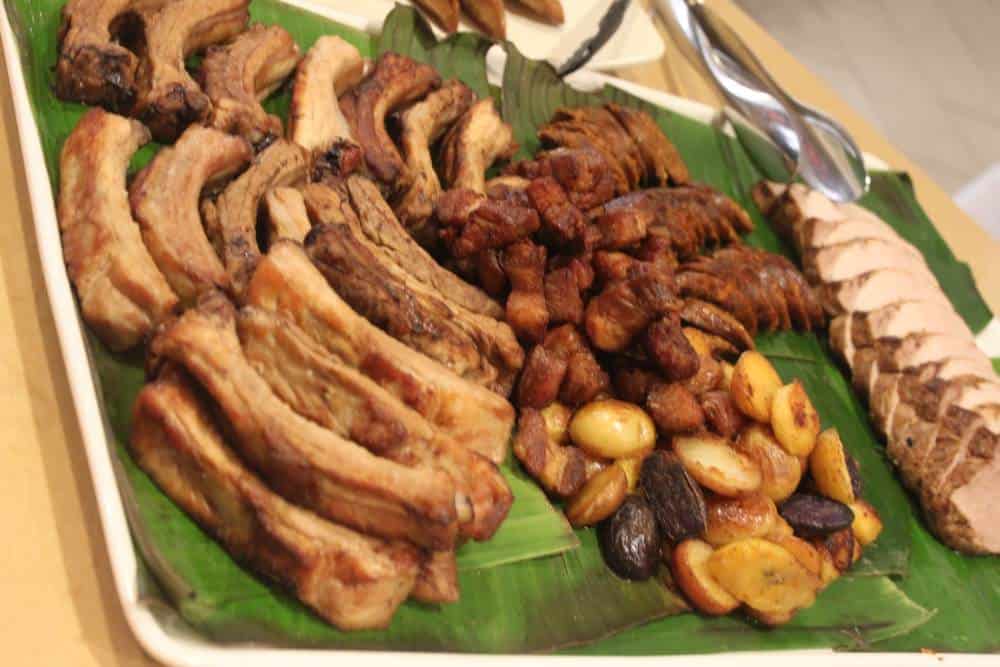
Hey everyone! Thanks for checking in with the Latin Concentration students! With our senior thesis due in a few weeks, my classmates and I have been very preoccupied, but regardless, we’ve been having a blast down here and are sad to leave this amazing campus in three weeks. Week nine marked a shift from the beautiful Caribbean to the cuisine of South America. Similar to the Caribbean, the recipes we prepared were almost completely unfamiliar to me, meaning I learned a lot this week! Keep reading to see how the flavors of Colombia and Venezuela dominated the Latin Kitchen.
This Week in the Latin Kitchen…
We began the week learning about the beautiful cuisine of Colombia, a country in the northern part of South America. One of my favorite recipes was the fritanga, a feast consisting of delicious, succulent pork. But it gets better. This pork is prepared four ways, and although it might be a bit heavy, there’s nothing wrong with indulging in this Colombian delicacy every once in a while, right? In a fritanga you have pork ribs marinated in lime, roasted pork loin, crispy pork belly, and chorizo. It’s then served with a side of potatoes sautéed with plantains. Pretty rich. But oh, so good. Another recipe I really enjoyed was the arepa con huevo. Arepas are corn dough shaped into disks. They’re usually deep fried, grilled, or pan fried, and stuffed with cheese, chicken, or anything you may have on hand. They’re super-versatile. The arepa con huevo is fried and split open, then an egg is cracked into it and it’s fried once again to cook the egg until perfection.
Later in the week we explored Venezuela, also a northern country located in South America. One thing I quickly discovered was that Colombia and Venezuela both integrate the arepa into their cuisine, and consider it a staple of their diets. It was also interesting to learn about the African influences in Venezuela and how they affect how the cuisine developed. One recipe that blew me away was patacones. These are fried green plantains and are often topped with meat or cheese. I topped mine with braised tender flank steak flavored with sofrito, red onion, and avocado. Interestingly enough, these crispy plantains are often treated as bread when making a sandwich. Imagine the possibilities with this recipe! A perfect substitute for people who are gluten-intolerant or for the adventurous diner who wants to try something new, patacones took me by surprise, and I’ll definitely be cooking with them again.
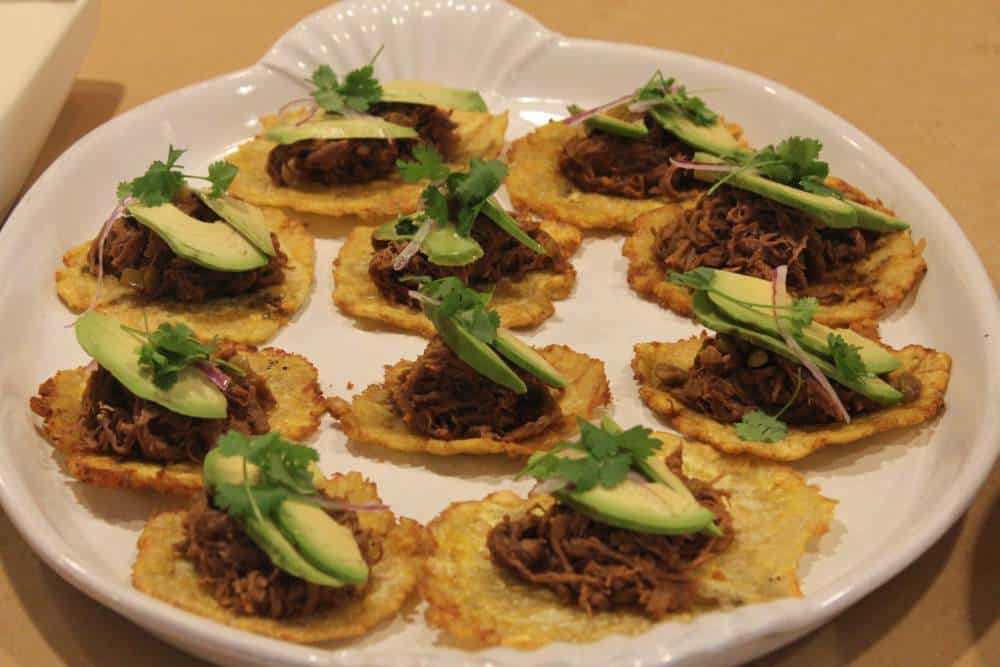
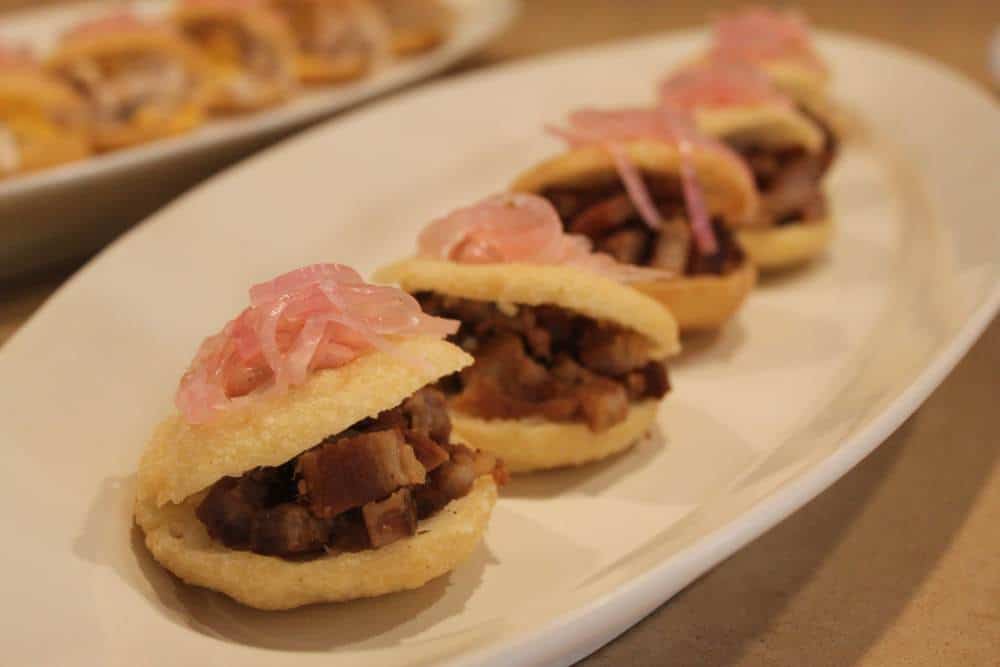
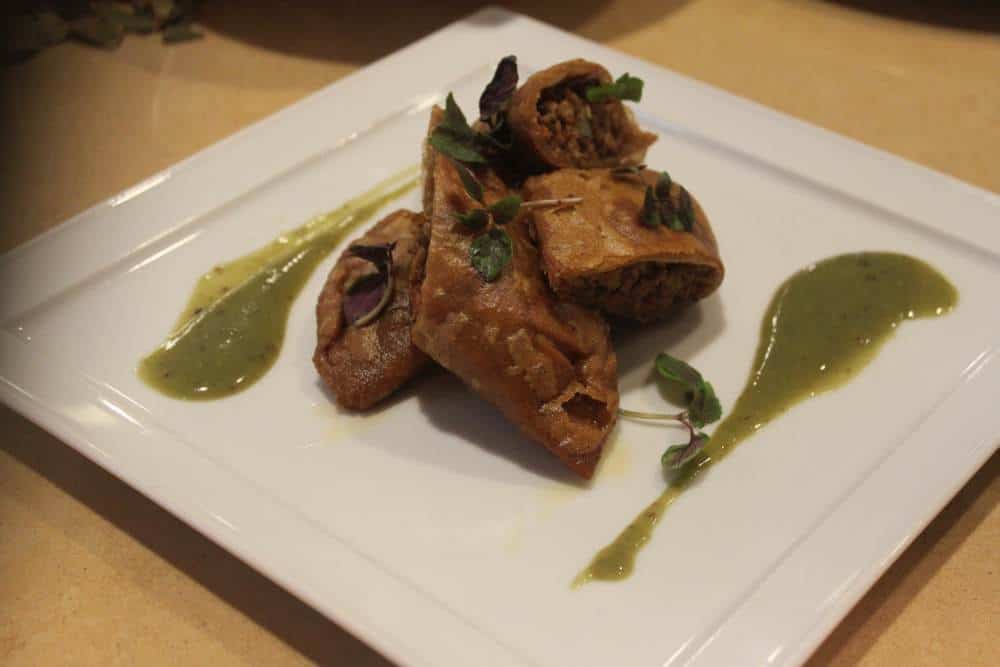
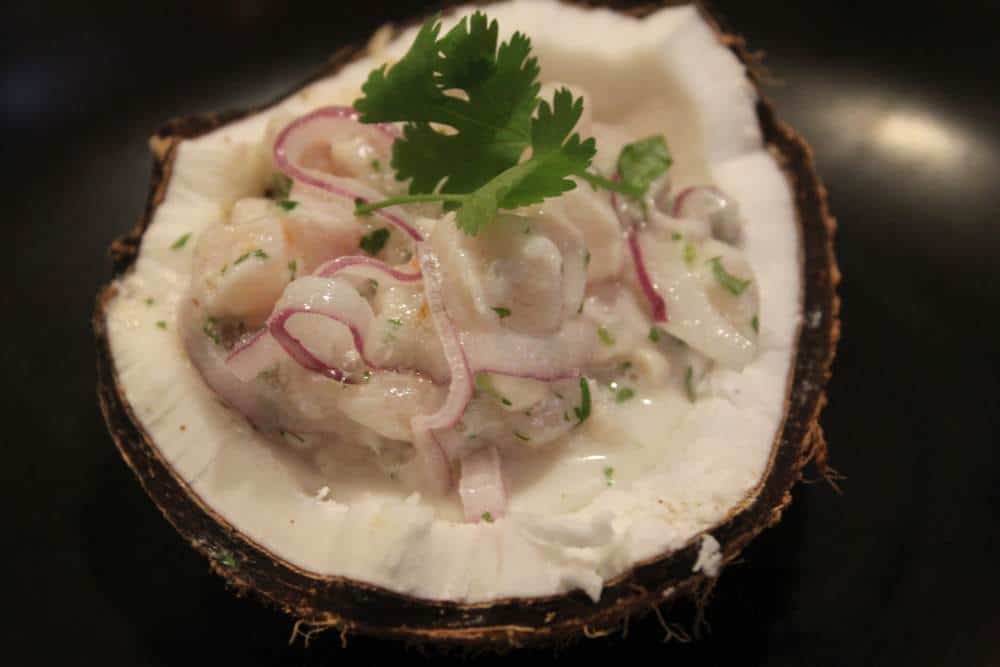
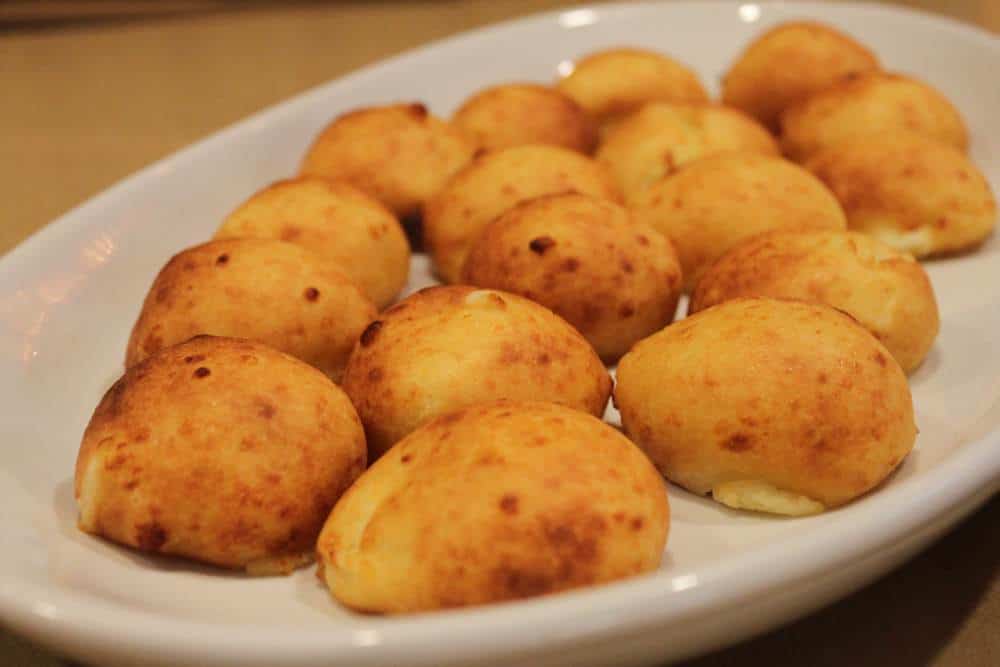
Arepas filled with crispy pork belly
Sweet empanada dough with a meat filling
Yucca bread
Snapper ceviche with coconut
Ancient Foods in a Modern World
Along with the three days of kitchen classes with Chef Remolina, my classmates and I also take an academic class once a week called Ancient Foods in a Modern World. This class has been very helpful for our writing skills. It also surprisingly focused on exploring the food community in San Antonio and the Latin influences around the city.
Julia Rosenfeld is our professor for this course and let me tell you, she has really helped us explore the hidden gems of San Antonio. It seems like she knows everyone around San Antonio! From restaurant owners to olive ranchers, Julia is definitely well-known in this city. When we aren’t working on our writing skills (which is what the class really focuses on), we take fun and informative field trips to learn about the rich culture of San Antonio. From Spanish missions to Texas olive ranches, Julia and Chef Remolina have truly helped us venture out and experience this city to the fullest.
Julia is very involved in the up-and-coming restaurants and other new happenings in the city. She even conducts her own food tours in San Antonio! https://foodchicktours.com If my classmates or I ever have a question about where to go eat for the weekend, she’s one of the first people we ask, no doubt.
In addition to being a great guide to San Antonio, Julia is an amazing writer (she’s been doing it for over 30 years!) and has helped us with our writing skills tremendously. She’s straightforward, honest, and extremely helpful when analyzing our work. Every week, we turn in a paper simply writing what we learned that week. There are no specific prompts, just writing in our own style without any pressure. The following class she’ll pick it apart, which honestly took some getting used to. But once my classmates and I let our guard down, we realized how helpful the class is, and how much we’ve all improved our writing skills since working with her. I recently completed an extensive research paper on cactus paddles, and Julia helped me develop it into the best it could be. I really appreciated the exercises she held because they helped me develop my writing skills significantly. Thanks Julia!
Professor Rosenfeld is a very talented individual with lots to offer in terms of food, culture, and happenings around the San Antonio area. If you ever get the chance to take this class with her during the Latin concentration, consider yourself lucky.
The Countdown Begins
Only three short weeks left in this wonderful city…so sad! The weeks keep going by faster and faster, but my classmates and I continue to grow and learn more and more thanks to the wonderful Latin concentration and our talented teachers. We can’t wait to apply what we’ve learned here to our future jobs in the industry. Lucky for us, before we leave we have the privilege of hosting our final pop-up dinner featuring South America next week—a good way to finish off the semester! Stay tuned to see what the Latin Kitchen will be cooking up next week.
Stay hungry,
Giselle
[starbox id=6]